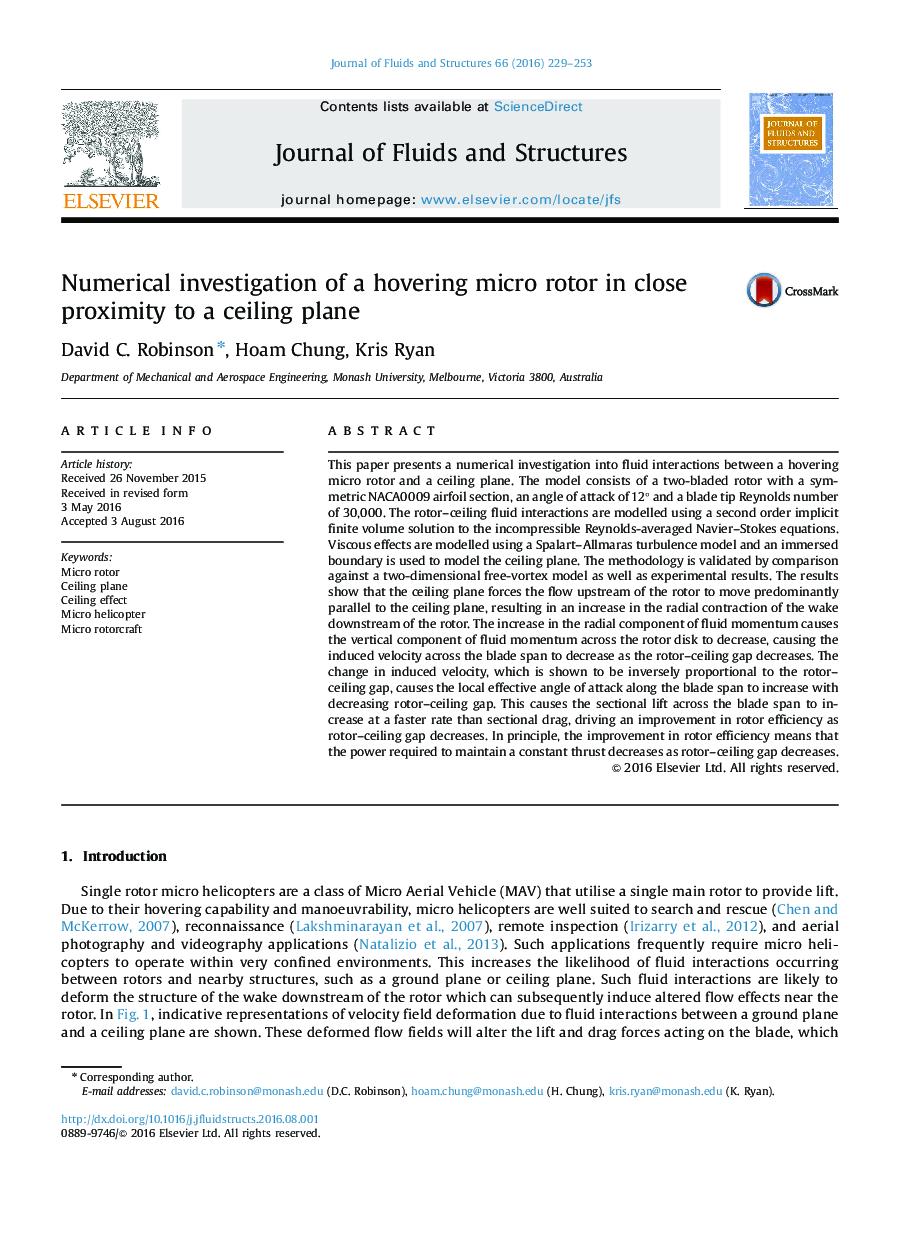| Article ID | Journal | Published Year | Pages | File Type |
|---|---|---|---|---|
| 7175873 | Journal of Fluids and Structures | 2016 | 25 Pages |
Abstract
This paper presents a numerical investigation into fluid interactions between a hovering micro rotor and a ceiling plane. The model consists of a two-bladed rotor with a symmetric NACA0009 airfoil section, an angle of attack of 12° and a blade tip Reynolds number of 30,000. The rotor-ceiling fluid interactions are modelled using a second order implicit finite volume solution to the incompressible Reynolds-averaged Navier-Stokes equations. Viscous effects are modelled using a Spalart-Allmaras turbulence model and an immersed boundary is used to model the ceiling plane. The methodology is validated by comparison against a two-dimensional free-vortex model as well as experimental results. The results show that the ceiling plane forces the flow upstream of the rotor to move predominantly parallel to the ceiling plane, resulting in an increase in the radial contraction of the wake downstream of the rotor. The increase in the radial component of fluid momentum causes the vertical component of fluid momentum across the rotor disk to decrease, causing the induced velocity across the blade span to decrease as the rotor-ceiling gap decreases. The change in induced velocity, which is shown to be inversely proportional to the rotor-ceiling gap, causes the local effective angle of attack along the blade span to increase with decreasing rotor-ceiling gap. This causes the sectional lift across the blade span to increase at a faster rate than sectional drag, driving an improvement in rotor efficiency as rotor-ceiling gap decreases. In principle, the improvement in rotor efficiency means that the power required to maintain a constant thrust decreases as rotor-ceiling gap decreases.
Keywords
Related Topics
Physical Sciences and Engineering
Engineering
Mechanical Engineering
Authors
David C. Robinson, Hoam Chung, Kris Ryan,
